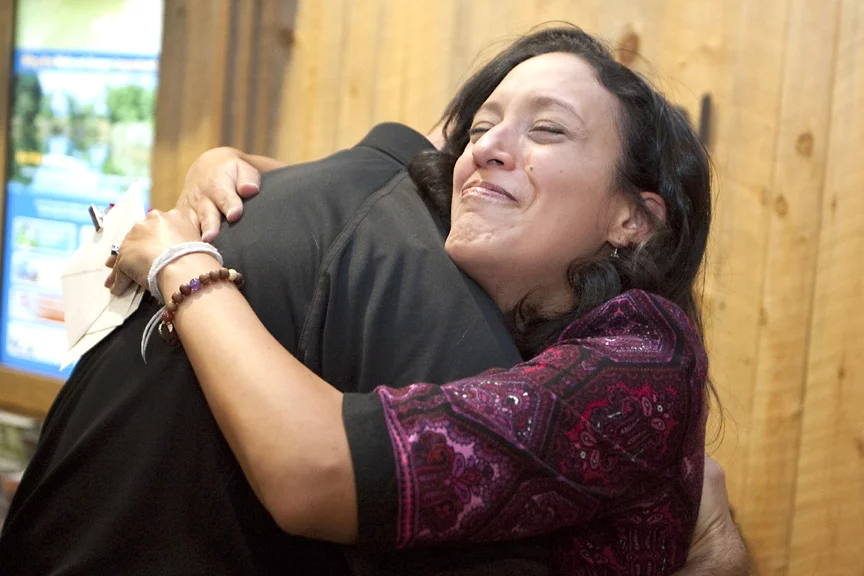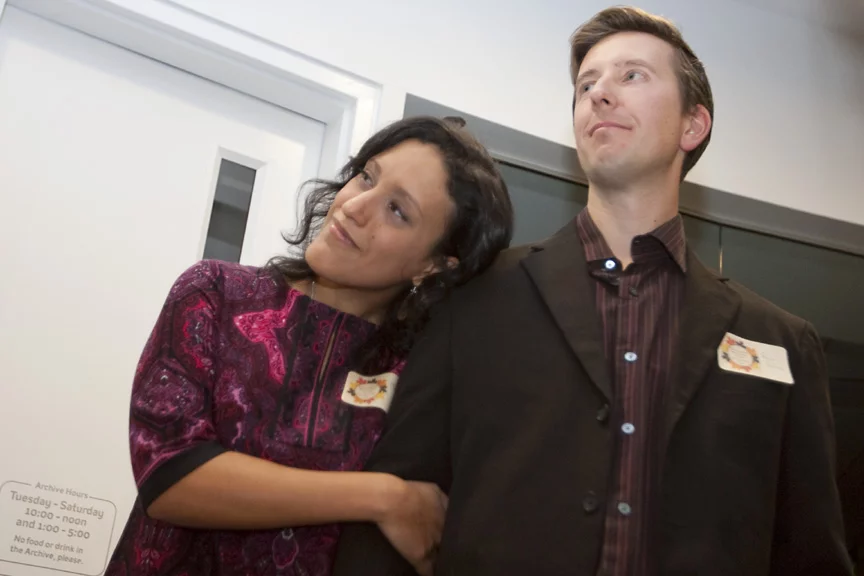
Angela Wilson, a mother of twin teenage boys, has been donating blood for 17 years.
Every eight weeks, local police officer Rob Knab’s calendar notification reminds him to donate.
These selfless donations are oftentimes the forgotten piece in lifesaving care of a patient — but not for Melinda Peterson.
“In a tragedy, you think of all the people who help, from the doctors to the people who clean your room. But sometimes you forget about the donors,” Peterson said.
Peterson was six months pregnant when she experienced a rare complication in March 2014. Her husband, Ryan, noticed something wasn’t right and called Poudre Valley Hospital (PVH) EMS paramedics.
“I had been bleeding internally for a while before coming to the hospital,” she said.
Tragically, their son, whom they named “Oak” after the creek where they held their wedding, did not survive. But if it hadn’t been for blood donors, as well as the UCHealth staff, neither would have Peterson.
“I received quite a bit of blood,” she said. “And if I hadn’t, I wouldn’t be here; I wouldn’t have a second chance. And Ryan wouldn’t have his wife, and my mom and dad wouldn’t have their daughter.”
Peterson required 54 blood products, including red blood cells, plasma and platelets, during her care at PVH.
“That number is not out of line for someone with an acute bleeding problem or severe trauma,” said Dr. Julie Dunn, a trauma and acute care surgeon with UCHealth Northern Colorado. “Although not unusual, it is a lot of blood product, and it reflects the importance of blood donations.”
Donations not only provide the bank with red blood cells. Plasma also is extracted from a qualified donor during a 40-minute blood donation. Donors also can choose to donate platelets — a 90- to 120-minute process. There is a higher demand for platelets because of their five-day shelf life, Blood Donor Recruiter Christina DiGiallonardo said.

“If everyone who was eligible donated three times a year, we’d meet our northern Colorado needs,” she said. “It’s hard to plan collections since our shelves may be full today, but then our supply can be wiped out in one weekend, so we have to purchase blood just to be safe.”
UCHealth’s Garth Englund Blood Center collects approximately 6,500 blood products each year through donors and hosts about 180 blood drives. All the blood that is donated stays in northern Colorado to help patients like Peterson, but the center needs about 1,900 more products annually to keep up with demand.
Type O blood is in highest demand because it is most compatible with other blood types, and blood type AB is the universal plasma donor, DiGiallonardo said.
“I knew I had liquid gold,” said Knap, who is type O negative, the only type compatible with every other blood type. But it wasn’t until the need hit close to home that he decided to donate.
“A coworker was shot on Christmas Day seven years ago,” Knap explained. “Knowing what he had to go through — all those surgeries — it made me recognize the need for blood donations.”
For the past six years, Knab and his wife regularly schedule their blood donations, and to keep it interesting, they compete to see who can fill up the donation bag the fastest.
Eligible people can donate blood every 56 days (eight weeks), and a donor must be at least 18 years old (or 17 with a parent’s permission). Donors must weigh at least 120 pounds (or 110 pounds if they have donated previously) and be in good health. It’s important that a donor eat before donating and be well hydrated, DiGiallonardo said.

The donation process takes about 45 minutes from start to finish. The donor provides a health history, signs a consent form, and is confirmed to be well enough to donate with a temperature, blood pressure, and finger-stick check. Once the needle is inserted into the vein on the inside of the elbow, the actual blood donation takes about five to 10 minutes. Afterward, the donor is sent off with a snack and often other treats, like a T-shirt.
“It’s a free way to help someone else and it requires no financial commitment and very little time,” Wilson said.
Peterson felt strongly about thanking those who saved her life, and in November 2015, she got the opportunity at the Garth Englund Blood Center annual donor appreciation night. It was the first time the center had received such a request from a blood recipient, DiGiallonardo said.
“Although we’ve never done it, it was such an amazing opportunity to honor the people who donate for our patients,” she said. “Why do we donate? Because we know we help someone, but for that donor to be able to see the face of that person they helped is a very emotional reward. Even those who didn’t want to meet face-to-face, you could tell they were completely moved by the request.”
Sign up to donate today by calling 970-495-8965, or learn more at uchealth.org/beahero. If you’re not in northern Colorado, head over to your community’s blood donor center.
